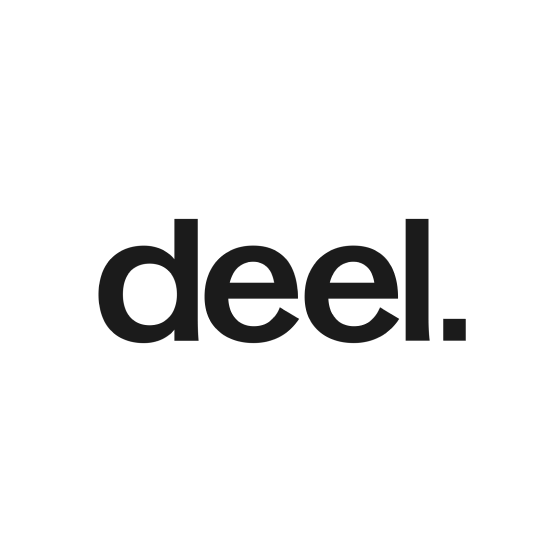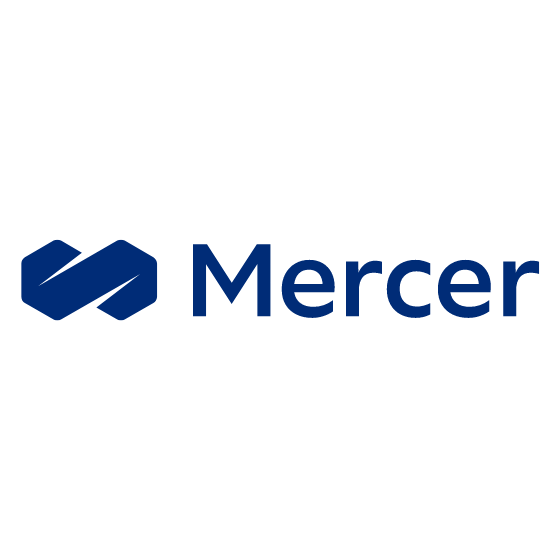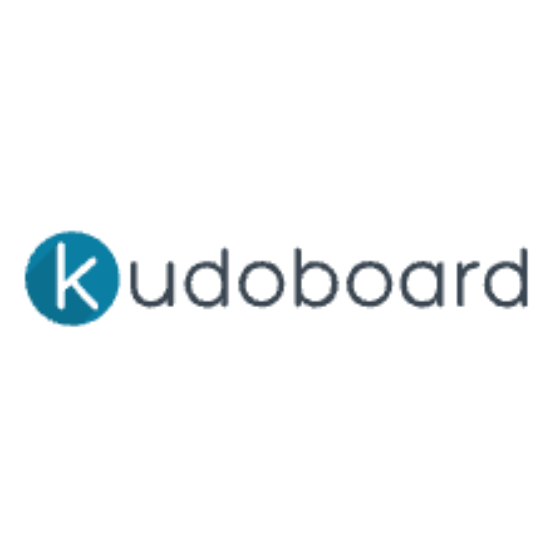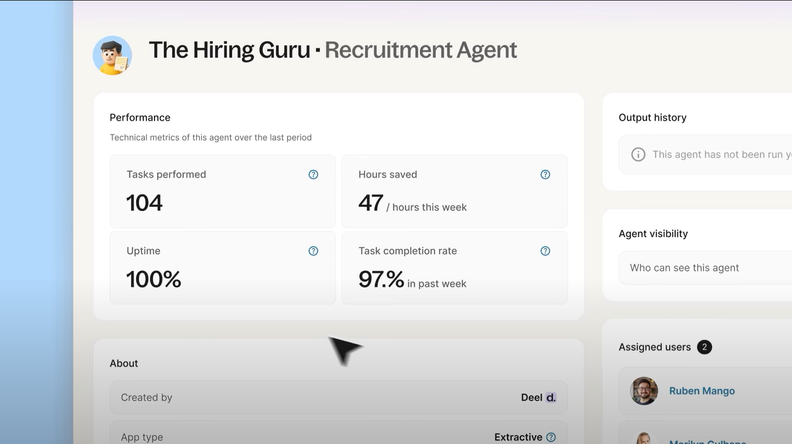10 Best AI Benefits Software Shortlist
Here's my pick of the 10 best software from the 14 tools reviewed.
The best AI employee benefits software helps HR teams simplify enrollment, optimize costs, and deliver a more personalized benefits experience—so employees feel supported and organizations stay compliant.
Managing benefits manually is time-consuming and error-prone, especially with complex regulations and diverse workforce needs.
AI-driven platforms streamline the process by automating compliance checks, analyzing usage patterns, and recommending tailored benefits packages that improve employee satisfaction and retention.
Drawing on years of testing HR technology, I’ve curated the top AI benefits solutions that are intuitive, cost-effective, and built to reduce admin while improving the employee experience.
In this guide, you’ll find tools that use intelligent automation and predictive analytics to make benefits management smarter, faster, and easier.
Why Trust Our Software Reviews
Best AI Benefits Software Summary
This comparison chart summarizes pricing details for my top AI benefits software selections to help you find the best one for your budget and business needs.
| Tool | Best For | Trial Info | Price | ||
|---|---|---|---|---|---|
| 1 | Best for global payroll automation | Free trial + demo available | From $29/month | Website | |
| 2 | Best for mid-sized companies | Free demo available | Pricing upon request | Website | |
| 3 | Best for small businesses | Free demo available | Pricing upon request | Website | |
| 4 | Best for compliance with data regulations | Free demo available | Pricing upon request | Website | |
| 5 | Best for mobile app access | Free demo available | Pricing upon request | Website | |
| 6 | Best for employee experience focus | Free demo available | Pricing upon request | Website | |
| 7 | Best for personalized benefits guidance | Free demo available | Pricing upon request | Website | |
| 8 | Best for user-friendly interface | Free demo available | Pricing upon request | Website | |
| 9 | Best for global benefits management | Free demo available | Pricing upon request | Website | |
| 10 | Best for large enterprise solutions | Free consultation available | Pricing upon request | Website |
-

Rippling
Visit WebsiteThis is an aggregated rating for this tool including ratings from Crozdesk users and ratings from other sites.4.8 -

Paylocity
Visit WebsiteThis is an aggregated rating for this tool including ratings from Crozdesk users and ratings from other sites.4.5 -

Kudoboard
Visit WebsiteThis is an aggregated rating for this tool including ratings from Crozdesk users and ratings from other sites.4.8
Best AI Benefits Software Review
Below are my detailed summaries of the best AI benefits software that made it onto my shortlist. My reviews offer a detailed look at the key features, pros & cons, integrations, and ideal use cases of each tool to help you find the best one for you.
Deel is an AI-powered HR and payroll platform that simplifies hiring, managing, and paying global teams. It enables organizations to handle international employees and contractors while ensuring compliance with local laws. As an AI benefits solution, Deel combines automation, analytics, and compliance tracking to streamline HR operations across 150+ countries.
Why I picked Deel: I picked Deel because its AI-driven payroll automation helps you manage international payments without the stress of manual processing. You can pay employees and contractors in multiple currencies while ensuring tax and legal compliance in each country. I also like how Deel’s compliance management tools automatically adapt to regional laws—making global HR simpler and less risky. For teams expanding across borders, Deel can serve as your all-in-one global HR system.
Standout features & integrations:
Features include automated payroll processing that ensures timely, compliant payments to employees and contractors worldwide, along with AI-driven compliance tools that detect potential issues before they cause problems. Deel also offers localized contracts tailored to each country’s labor laws, reducing the risk of noncompliance.
Integrations include SAP SuccessFactors, NetSuite, Slack, Google Workspace, Zoom, QuickBooks, BambooHR, Gusto, ADP Workforce Now, Microsoft Teams, Salesforce, and HubSpot.
Pros and cons
Pros:
- Reliable automated payroll processing
- Strong compliance management tools
- User-friendly global HR platform
Cons:
- Minor lags in report generation
- Benefits customization options limited
New Product Updates from Deel
Introducing Deel AI Workforce
Deel has launched the AI Workforce, a set of specialized agents designed to handle repetitive HR, payroll, and compliance tasks with speed and accuracy. These AI agents don’t just assist—they execute tasks from start to finish. For more information, visit Deel's official site.
bswift is a benefits administration platform tailored for mid-sized companies looking to simplify their HR processes. It focuses on providing comprehensive benefits management solutions that enhance efficiency and employee engagement.
Why I picked bswift: bswift leverages AI to simplify and scale benefits administration, making it a strong choice for mid-sized companies. Its intelligent automation streamlines enrollment, compliance, and communication, reducing administrative complexity while ensuring accuracy.
By delivering tailored benefits experiences, bswift helps growing businesses manage programs effectively without adding overhead.
Standout features & integrations:
Features include AI-powered benefits enrollment tools that guide employees through personalized choices, improving decision-making and satisfaction. Its compliance management is enhanced with intelligent automation to adapt to changing regulations and reduce risk. AI-driven communication tools deliver timely, targeted messages that improve engagement, while advanced analytics surface trends in benefits usage and costs.
Integrations include ADP, Workday, Kronos, Oracle, SAP SuccessFactors, and Ceridian.
Pros and cons
Pros:
- Versatile communication tools
- Effective compliance management
- Scalable for mid-sized companies
Cons:
- Internet dependent
- May need training for new users
Happl is an employee engagement platform designed for small businesses looking to improve workplace satisfaction and productivity. It helps HR teams by offering tools for feedback collection, recognition, and communication.
Why I picked Happl: Happl applies AI to make employee benefits smarter and more impactful for small businesses. Instead of offering one-size-fits-all perks, Happl’s AI personalizes benefits recommendations to meet diverse employee needs, ensuring your team feels supported and valued.
Its simple, user-friendly design makes benefits management accessible without sacrificing intelligence or insight.
Standout features & integrations:
Features include AI to tailor benefits options and highlight the perks most relevant to each employee. Its intelligent analytics track benefit usage and sentiment, surfacing opportunities to improve offerings while keeping costs under control. AI-powered communication tools deliver personalized updates about benefits, increasing awareness and adoption.
Integrations include Slack, Microsoft Teams, Trello, Asana, and Google Workspace.
Pros and cons
Pros:
- Real-time feedback collection
- Simple engagement solutions
- Tailored for small businesses
Cons:
- Basic customization options
- Limited advanced features
ApexBenefits is a benefits consulting firm focused on helping employers manage group insurance programs and healthcare risks. It primarily serves businesses looking to save money while providing valuable employee benefits.
Why I picked ApexBenefits: ApexBenefits applies AI and advanced analytics to benefits strategy, compliance, and healthcare risk management. Its Kinetiq Health program uses AI-driven claims analysis to identify cost drivers, minimize risks, and ensure compliance with data regulations.
This makes ApexBenefits a strong partner for organizations that prioritize both employee wellbeing and data protection.
Standout features & integrations:
Features include the Kinetiq Health platform leverages AI to analyze healthcare claims data, flag risks, and uncover opportunities for cost savings. Its benefits consulting services are enhanced with predictive insights, helping employers design more strategic, compliant, and cost-effective programs. AI-driven compliance support reduces regulatory risks, while tailored strategy development ensures benefits align with organizational goals.
Integrations include ADP, Workday, Oracle, SAP SuccessFactors, and Kronos.
Pros and cons
Pros:
- Detailed data analysis
- Effective risk management
- Strong data compliance focus
Cons:
- May need technical expertise
- Potentially high costs for small teams
Benify is a benefits management platform designed for organizations looking to enhance employee engagement through accessible benefits administration. It serves companies by offering tools that simplify benefits management and improve employee satisfaction.
Why I picked Benify: Benify brings AI-powered personalization to employee benefits, making them more accessible and engaging. Its mobile-first approach, paired with an intelligent benefits portal, ensures employees can explore, select, and manage benefits anytime, anywhere.
With AI guiding recommendations and communications, Benify makes complex benefits simple and tailored for every employee.
Standout features & integrations:
Features include an AI-driven benefits portal that adapts to each employee’s needs, offering personalized recommendations and real-time updates. Its intelligent notifications ensure employees never miss important benefits opportunities, while analytics help HR teams optimize offerings and monitor adoption.
Integrations include SAP SuccessFactors, Oracle, Microsoft Dynamics, Workday, and ADP.
Pros and cons
Pros:
- Supports informed decision-making
- Keeps employees informed
- Personalized benefits portal
Cons:
- Additional costs for advanced features
- Potential learning curve
Empryean is a benefits administration platform designed for organizations that prioritize employee engagement and satisfaction. It supports HR teams by enhancing employee experiences through personalized benefits management.
Why I picked Empryean: Empyrean integrates AI to personalize benefits administration and enhance the overall employee experience. By tailoring benefits recommendations and support to individual needs, it helps organizations boost engagement and satisfaction. Its AI-powered tools provide clarity and guidance, ensuring employees make the most of their benefits while HR teams gain actionable insights to refine programs.
Standout features & integrations:
Features include AI-driven benefits personalization, delivering tailored guidance and resources to employees. Intuitive dashboards, powered by AI, simplify complex benefits information and improve decision-making for both employees and HR leaders. Detailed analytics uncover trends in benefits usage and engagement, helping organizations optimize their programs.
Integrations include ADP, Workday, Oracle, SAP SuccessFactors, and Kronos.
Pros and cons
Pros:
- Intuitive dashboards
- Personalized benefits support
- Focus on employee satisfaction
Cons:
- Requires initial training
- Limited customization options
Nayya is a benefits software designed for organizations looking to enhance employee decision-making in health and wealth. It primarily serves HR teams by offering personalized guidance to optimize benefits choices.
Why I picked Nayya: Nayya distinguishes itself by providing personalized benefits guidance, helping your team make smarter decisions. Its agentic AI doesn't just advise; it acts, streamlining benefits management.
With features like automated claims filing and personalized recommendations, it offers a unique approach to managing health and wealth benefits. This makes it ideal for those who need tailored insights and actionable advice.
Standout features & integrations:
Features include personalized benefits guidance, automated claims filing, and real-time decision support. These features help you and your team navigate complex benefits options with ease. With its intuitive interface, Nayya ensures you get the most value from your benefits package.
Integrations include Slack, Microsoft Teams, iMessage, and more.
Pros and cons
Pros:
- Real-time decision support
- Automated claims filing
- Personalized guidance
Cons:
- Requires internet connectivity
- Limited offline access
Pasito is a benefits management platform designed for small to mid-sized businesses looking to simplify their benefits administration. It caters to HR teams by offering straightforward solutions that improve employee engagement and decision-making.
Why I picked Pasito: Pasito uses AI to simplify benefits decision-making with personalized recommendations that guide employees through complex choices. Its intuitive interface ensures quick adoption, making it easy for teams to get value right away.
By blending simplicity with intelligence, Pasito empowers employees to make confident decisions while helping organizations optimize benefits strategies.
Standout features & integrations:
Features include AI-powered personalized benefits recommendations and decision support tools that adapt to each employee’s needs. Its intuitive dashboards make navigating complex benefits straightforward, while analytics track usage patterns and identify opportunities to improve offerings. With AI-driven guidance and actionable insights, Pasito helps organizations deliver a smarter, user-friendly benefits experience without adding administrative burden.
Integrations include ADP, Workday, Oracle, SAP SuccessFactors, and Gusto.
Pros and cons
Pros:
- Effective analytics
- Simplified decision support
- Quick adoption
Cons:
- May lack advanced features
- Limited customization options
Alight is a benefits management platform aimed at large organizations needing global HR solutions. It enhances employee satisfaction while improving business efficiency through health benefits administration, employee onboarding, and engagement services.
Why I picked Alight: Alight leverages its proprietary LumenAI technology to transform global benefits management and HR operations. By personalizing and automating employee benefits, Alight delivers tailored experiences that adapt to diverse workforce needs.
Its AI-driven approach makes it especially powerful for multinational organizations looking to streamline health, retirement, and wellbeing solutions at scale.
Standout features & integrations:
Features include LumenAI’s intelligent benefits administration, offering personalized recommendations for health, retirement, and wellbeing programs. Its AI-driven automation simplifies onboarding, absence management, and compliance across global operations. Predictive analytics help identify workforce trends and guide strategic HR planning, while real-time insights enhance decision-making.
Integrations include Workday, Oracle, SAP, SuccessFactors, and ADP.
Pros and cons
Pros:
- Comprehensive benefits administration
- Personalized benefits experience
- Global HR solutions
Cons:
- May require extensive training
- Complex initial setup
Mercer offers a benefits software platform tailored for large enterprises looking to manage employee benefits efficiently. It focuses on enhancing employee engagement and simplifying benefits administration across vast organizations.
Why I picked Mercer: Mercer’s Darwin platform uses AI to simplify and optimize the management of complex, large-scale benefits structures. Designed for enterprises with diverse global workforces, Darwin leverages AI to personalize benefits, improve communication, and surface insights that support smarter decision-making.
Its scalability and flexibility make it a strong choice for organizations needing to adapt benefits programs as they grow.
Standout features & integrations:
Features include AI-powered benefits personalization, tailoring options to employee needs while helping organizations control costs. Its advanced analytics and reporting tools, enhanced by AI, reveal benefits usage patterns and identify opportunities for optimization.
Intelligent automation streamlines benefits administration across multiple geographies, while AI-driven communication ensures employees receive timely, relevant updates. With these features, Mercer empowers enterprises to deliver efficient, scalable, and engaging benefits programs worldwide.
Integrations include Workday, SAP SuccessFactors, Oracle, ADP, and PeopleSoft.
Pros and cons
Pros:
- Detailed analytics
- Supports diverse workforces
- Customizable options
Cons:
- Complex initial setup
- Steep learning curve
Other AI Benefits Software
Here are some additional AI benefits software options that didn’t make it onto my shortlist, but are still worth checking out:
- Willis Towers Watson (WTW)
For scalable solutions
- BenefitFocus
For data analytics capabilities
- helpmechoosebenefits
For decision-making support
- Deloitte
For AI-driven insights
AI Benefits Software Selection Criterion
When selecting the best AI benefits software to include in this list, I considered common buyer needs and pain points like decision-making complexity and regulatory compliance. I also used the following framework to keep my evaluation structured and fair:
Core Functionality (25% of total score)
To be considered for inclusion in this list, each solution had to fulfill these common use cases:
- Benefits enrollment management
- Employee communication tools
- Compliance tracking and reporting
- Data analytics and reporting
- Integration with HR systems
Additional Standout Features (25% of total score)
To help further narrow down the competition, I also looked for unique features, such as:
- AI-driven decision support
- Personalized benefits recommendations
- Mobile app access
- Real-time analytics dashboard
- Customizable user interface
Usability (10% of total score)
To get a sense of the usability of each system, I considered the following:
- Intuitive navigation
- Clean interface design
- Minimal learning curve
- Responsive design for mobile access
- User feedback and customization options
Onboarding (10% of total score)
To evaluate the onboarding experience for each platform, I considered the following:
- Availability of training videos
- Interactive product tours
- Access to templates and guides
- Live webinars and workshops
- Supportive chatbots and helpdesk
Customer Support (10% of total score)
To assess each software provider’s customer support services, I considered the following:
- 24/7 customer service availability
- Multiple support channels
- Dedicated account managers
- Online knowledge base
- Response time and resolution efficiency
Value For Money (10% of total score)
To evaluate the value for money of each platform, I considered the following:
- Competitive pricing structure
- Transparency in pricing
- Flexible subscription plans
- Discounts for long-term contracts
- Return on investment potential
Customer Reviews (10% of total score)
To get a sense of overall customer satisfaction, I considered the following when reading customer reviews:
- Overall satisfaction ratings
- Feedback on feature effectiveness
- Comments on ease of use
- Opinions on customer support quality
- Insights on system reliability and uptime
How to Choose AI Benefits Software
It’s easy to get bogged down in long feature lists and complex pricing structures. To help you stay focused as you work through your unique software selection process, here’s a checklist of factors to keep in mind:
| Factor | What to Consider |
|---|---|
| Scalability | Will the software grow with your company? Consider if it can handle increasing users or data without performance issues. Look for tools that offer flexible scaling options. |
| Integrations | Does it integrate with your existing systems, like HR and payroll? Check compatibility to avoid data silos and ensure seamless workflows. |
| Customizability | Can you tailor the software to fit your needs? Look for options to customize dashboards, reports, and user permissions to match your processes. |
| Ease of use | Is the interface user-friendly? Consider feedback from potential users and test if the software is intuitive, requiring minimal training. |
| Implementation and onboarding | How long will it take to set up and train your team? Assess the resources needed for a smooth transition and check for available support during the process. |
| Cost | Does the pricing align with your budget? Evaluate the total cost of ownership, including hidden fees, to ensure it fits your financial plan. |
| Security safeguards | How secure is your data? Look for encryption, regular security audits, and compliance with relevant standards to protect sensitive information. |
| Compliance requirements | Does the software meet industry regulations? Ensure it supports compliance with laws and standards relevant to your business, like HIPAA or GDPR. |
What Is AI Benefits Software?
AI benefits software is a tool that automates and optimizes employee benefits management using artificial intelligence. HR professionals and benefits administrators typically use these tools to simplify enrollment, improve decision-making, and enhance employee satisfaction.
Features like data analytics, personalized recommendations, and compliance tracking help with efficient benefits management and informed decision-making. Overall, these tools save time and reduce administrative burdens.
Features of AI Benefits Software
When selecting AI benefits software, keep an eye out for the following key features:
- Data analytics: Provides insights into benefits usage and trends, helping you make informed decisions.
- Personalized recommendations: Offers tailored benefits suggestions based on employee preferences and needs.
- Compliance tracking: Ensure adherence to industry regulations, such as HIPAA and GDPR, to reduce legal risks.
- Benefits enrollment management: Streamlines the process of enrolling employees in benefits plans.
- Integration capabilities: Connects with existing HR and payroll systems for smooth data flow.
- Customizable dashboards: Allow you to tailor views and reports to match your business requirements.
- Mobile app access: Enables employees to manage their benefits on the go, increasing engagement.
- Predictive analytics: Anticipates future trends and needs, aiding in strategic planning.
- Real-time updates: Keep employees informed with the latest benefits information, enhancing communication.
Benefits of AI Benefits Software
Implementing AI benefits software provides several benefits for your team and your business. Here are a few you can look forward to:
- Improved decision-making: AI-driven insights and recommendations help your team choose the best benefits options for employees.
- Increased compliance: Automated compliance tracking ensures adherence to regulations, reducing the risk of legal issues.
- Time savings: Streamlined enrollment and management processes free up time for HR professionals to focus on other tasks.
- Enhanced employee satisfaction: Personalized benefits offerings and real-time updates keep employees informed and engaged.
- Cost efficiency: Data analytics and predictive insights help optimize benefits spending and reduce unnecessary costs.
- Better communication: Integration with existing systems and mobile access improves the flow of information between employees and HR teams.
Costs and Pricing of AI Benefits Software
Selecting AI benefits software requires an understanding of the various pricing models and plans available. Costs vary based on features, team size, add-ons, and more. The table below summarizes common plans, their average prices, and typical features included in AI benefits software solutions:
Plan Comparison Table for AI Benefits Software
| Plan Type | Average Price | Common Features |
|---|---|---|
| Free Plan | $0 | Basic benefits enrollment, limited support, and standard reporting. |
| Personal Plan | $5-$25/user/month | Enhanced reporting, mobile access, and personalized recommendations. |
| Business Plan | $30-$75/user/month | Compliance tracking, data analytics, and integration with HR systems. |
| Enterprise Plan | $80-$150/user/month | Advanced analytics, custom dashboards, dedicated support, and full customization. |
AI Benefits Software FAQs
Here are some answers to common questions about AI benefits software:
How does AI benefit software work?
AI benefits software streamlines benefits management by automating routine tasks like enrollment and data analysis. It helps your team make informed decisions by providing insights from complex datasets. This technology enhances efficiency and reduces errors, making it a valuable tool for HR departments.
What should I consider when choosing AI benefits software?
Consider factors like scalability, integration capabilities, and ease of use. Ensure the software aligns with your company’s size and needs. Look for features that support compliance and data security. Evaluate the vendor’s support and training options to ensure a smooth implementation process.
How do AI benefits tools enhance decision-making?
These tools use data analytics and predictive modeling to provide insights into employee needs and trends. They help your team tailor benefits offerings to improve satisfaction and retention. By analyzing historical data, AI benefits software can predict future needs, aiding strategic planning.
Are there specific compliance features in AI benefits software?
Yes, many AI benefits tools include compliance tracking to ensure adherence to regulations like HIPAA or GDPR. They automate reporting and alert you to potential compliance issues. This helps your team avoid legal pitfalls and maintain data integrity while managing employee benefits.
Can AI benefits software integrate with existing HR systems?
Most AI benefits solutions offer integration capabilities with popular HR platforms like Workday or ADP. This ensures seamless data flow and reduces manual data entry. Check compatibility with your current systems to ensure the software fits into your existing workflows.
What are the typical costs associated with AI benefits software?
Costs vary based on features, user count, and customization needs. Pricing models may include per-user fees or flat rates. Consider the total cost of ownership, including setup and training expenses. Evaluate the value the software provides against its cost to ensure it meets your budget.
What’s Next:
If you're in the process of researching AI benefits software, connect with a SoftwareSelect advisor for free recommendations.
You fill out a form and have a quick chat where they get into the specifics of your needs. Then you'll get a shortlist of software to review. They'll even support you through the entire buying process, including price negotiations.

























